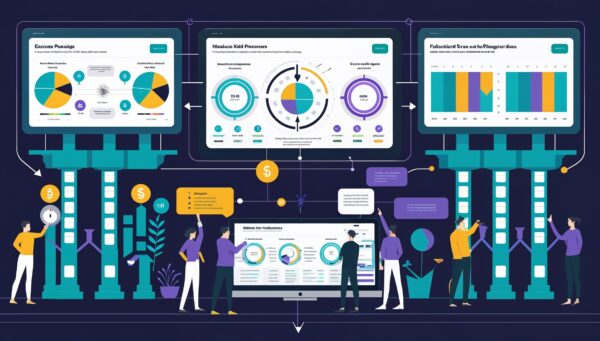Are the Balanced Scorecard and the EFQM Excellence Model mutually exclusive, or do they work together to bring added value to a company? This is an exploration of the relationship between the EFQM business excellence model and the balanced scorecard framework (BSC) -
IT professionals are often challenged to choose the proper organizational performance management framework. There are many choices, but two stand out for their widespread usage and proven effectiveness: the Balanced Scorecard (BSC) and the EFQM Business Excellence Model. However, understanding the unique characteristics of each and how they interact is crucial to their successful implementation and achieving organizational objectives.
Many organizations struggle with the question of whether to implement the BSC, a performance measurement framework that provides a balanced view of organizational performance from four perspectives (financial, customer, internal process, and learning and growth), or the EFQM Business Excellence Model, a comprehensive quality management tool that promotes excellence in all aspects of business operations. There can be confusion as to whether these models are mutually exclusive or can be used complementary.
This is an examination of the relationship between the BSC and the EFQM Business Excellence Model, probing whether they are mutually exclusive or can coexist to bring added value to a company. It breaks down each model's distinct features, methodologies, and applications, providing IT professionals with an in-depth understanding that can guide their strategic decisions. Additionally, the paper delves into the potential synergies between the two models, revealing how their combined use can result in comprehensive performance management that addresses both strategic and operational aspects of business, leading to overall organizational excellence.
As leaders responsible for aligning business strategy with IT capabilities, CIOs frequently select and implement performance management models to optimize efficiency and effectiveness in their departments and across the organization. The knowledge acquired from this document can significantly aid CIOs in solving several real-world problems they encounter.
Understanding the relationship between the Balanced Scorecard (BSC) and the EFQM Business Excellence Model can help CIOs craft a more holistic and comprehensive performance management strategy. For example, if the organization seeks a performance measurement system focusing on strategic management and performance metrics, the BSC could be preferable. However, if there's a need for a quality management tool that emphasizes comprehensive business excellence, the EFQM model might be more suitable.
The knowledge that these two models aren't mutually exclusive but can complement each other is particularly beneficial. For instance, the BSC can provide a strategic direction and measurement framework, while the EFQM Model can support it by promoting excellence in operational processes. This could lead to a more balanced performance management system covering all critical aspects of the business.
Also, understanding how these frameworks interact can guide CIOs in their IT strategic planning and execution. They can integrate these models into their IT governance frameworks to manage and monitor IT performance effectively, align IT initiatives with business objectives, and ensure continuous improvement.
Lastly, this understanding can assist CIOs in justifying their strategic decisions to other organizational stakeholders, facilitating buy-in and promoting effective collaboration. By showing how the two models work together to bring added value, they can build a stronger case for their implementation and ongoing use.

